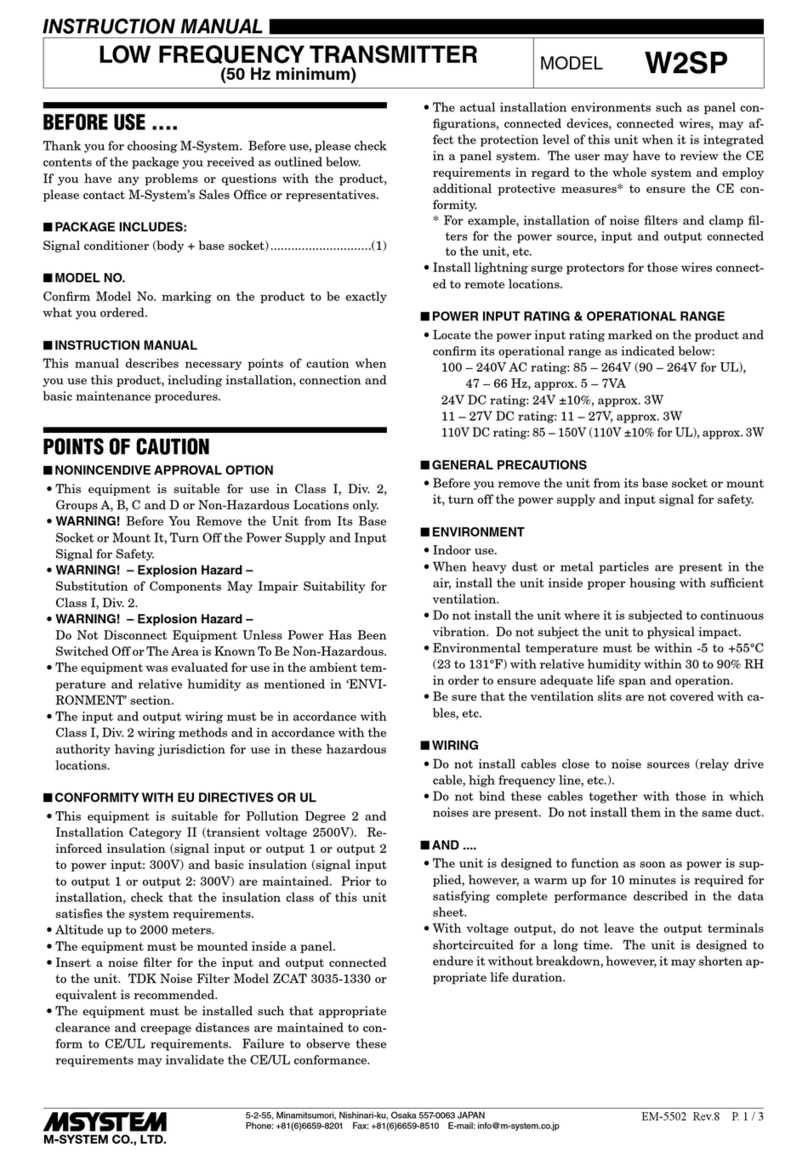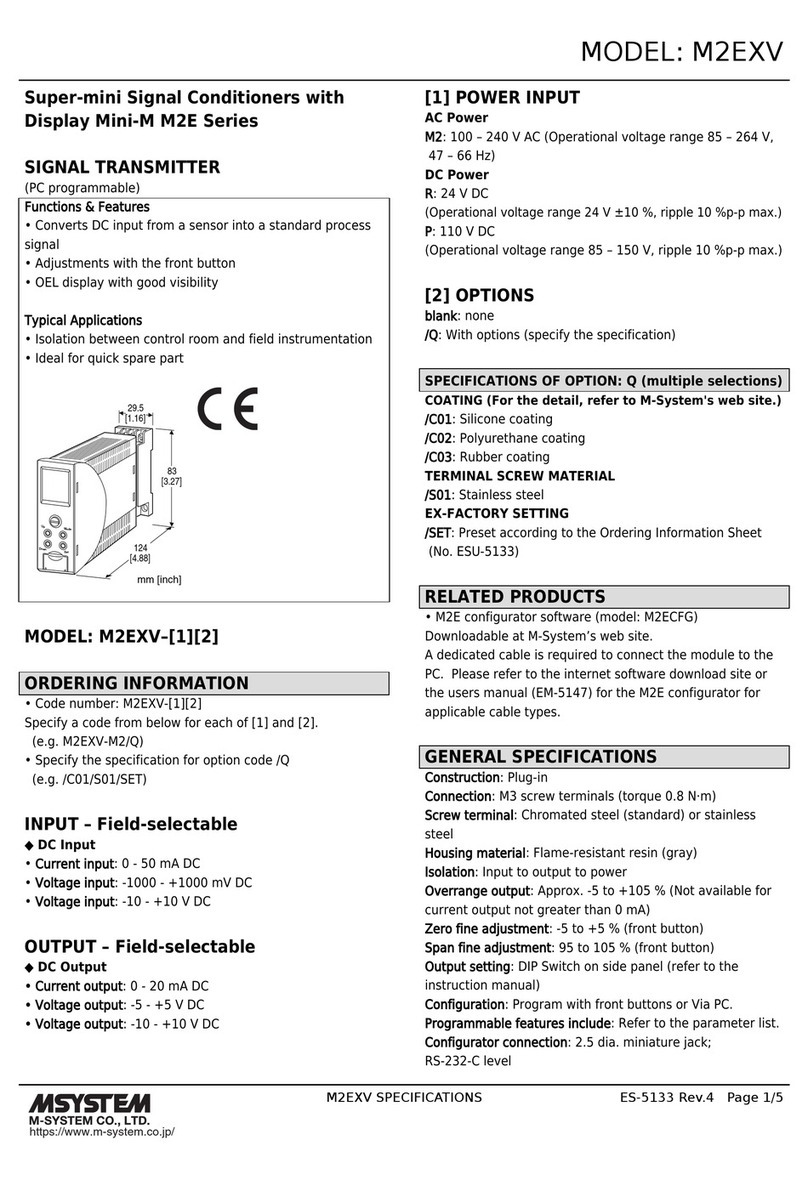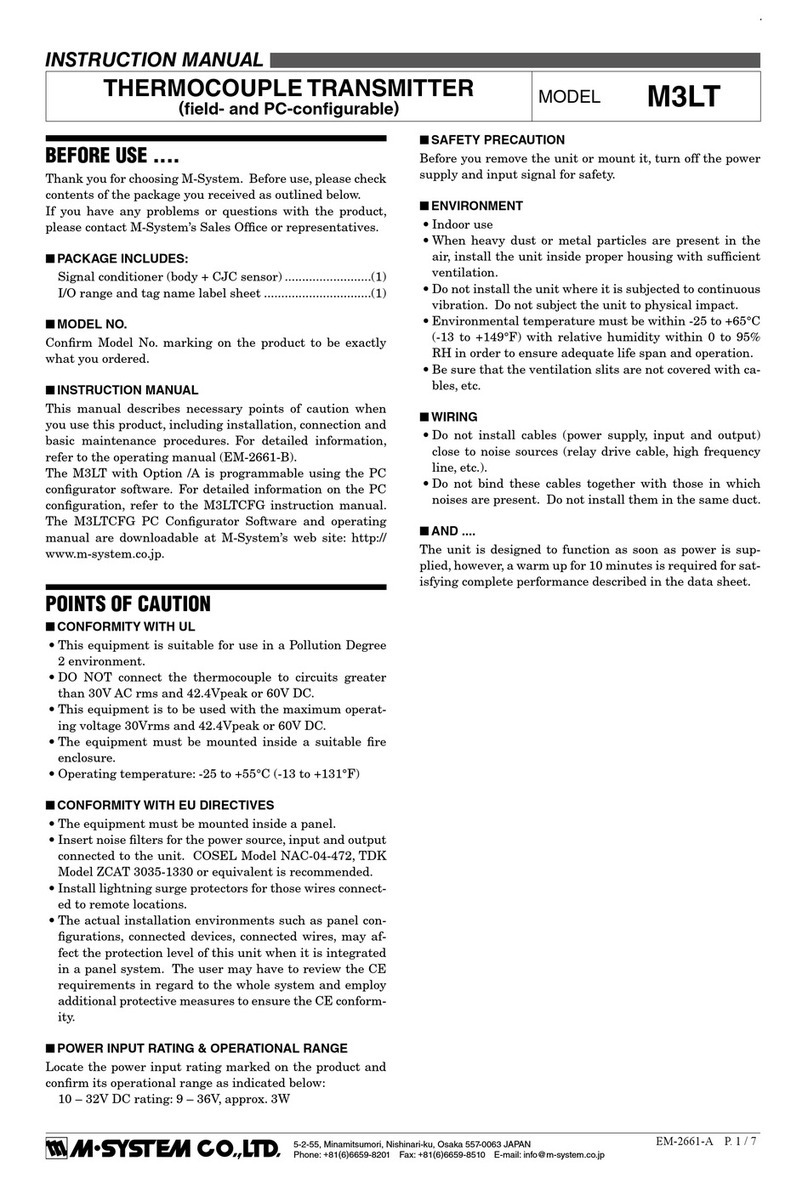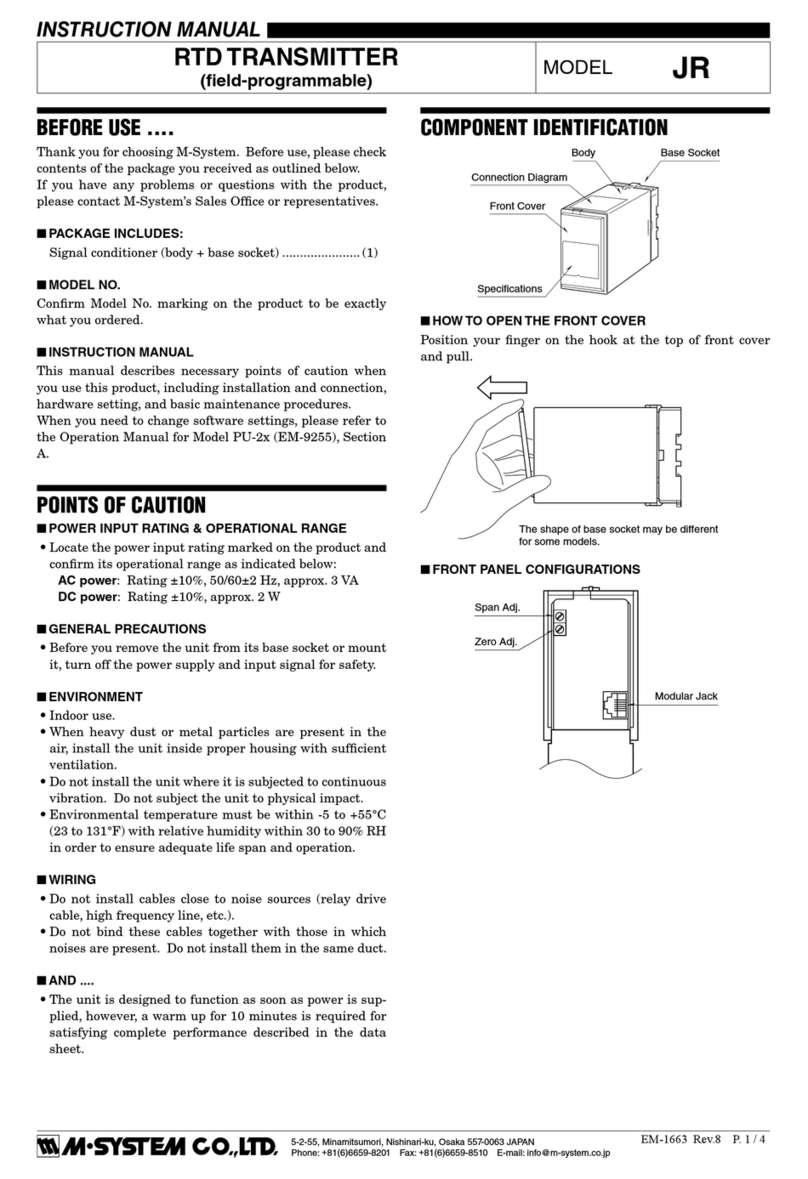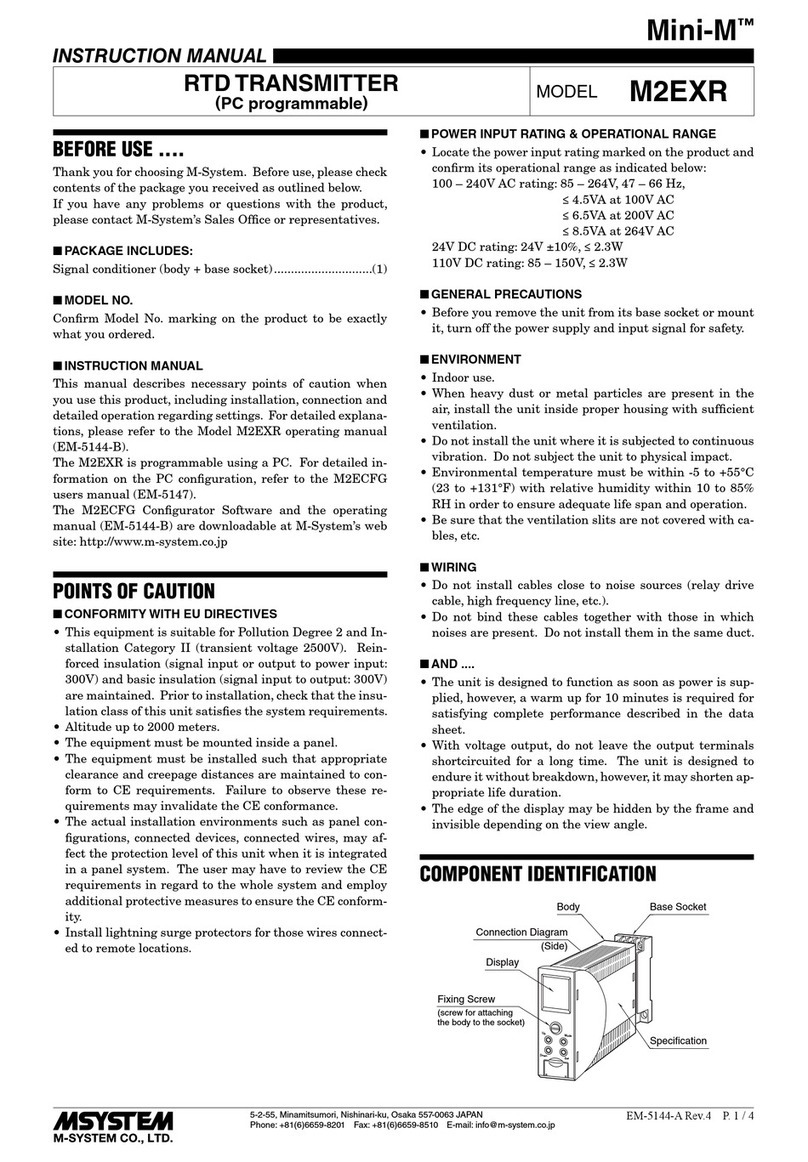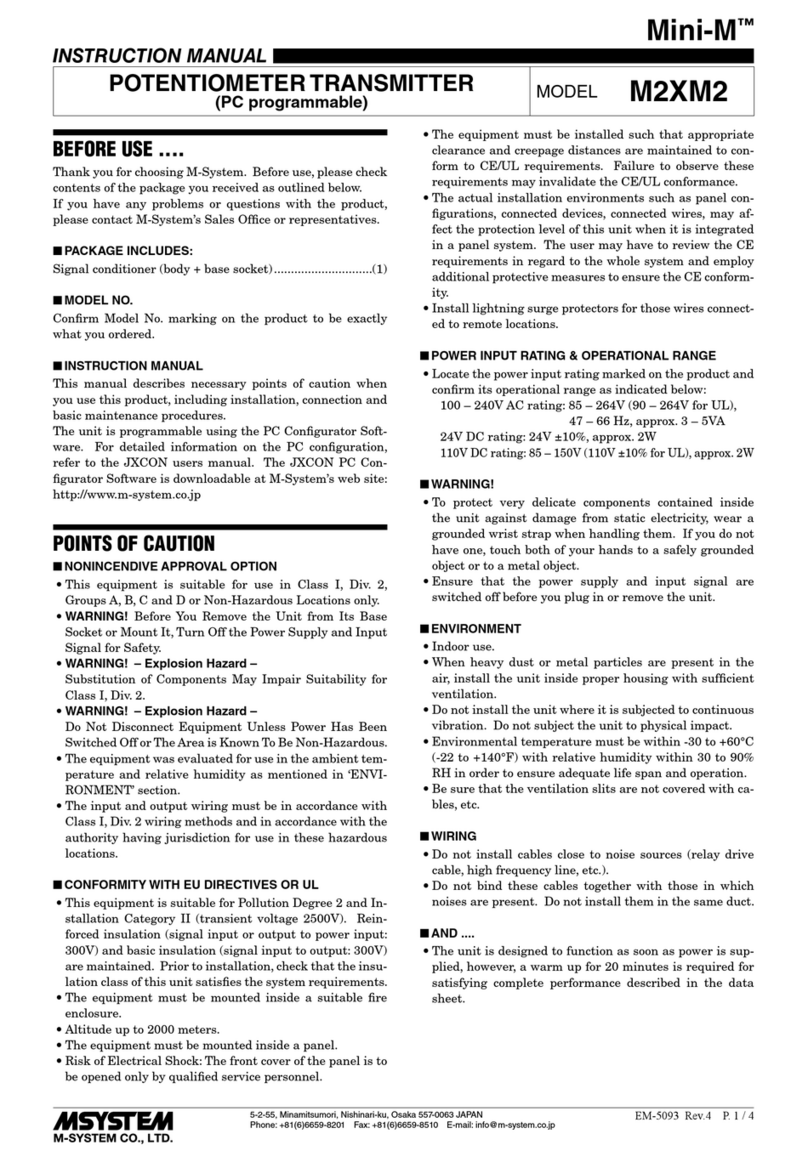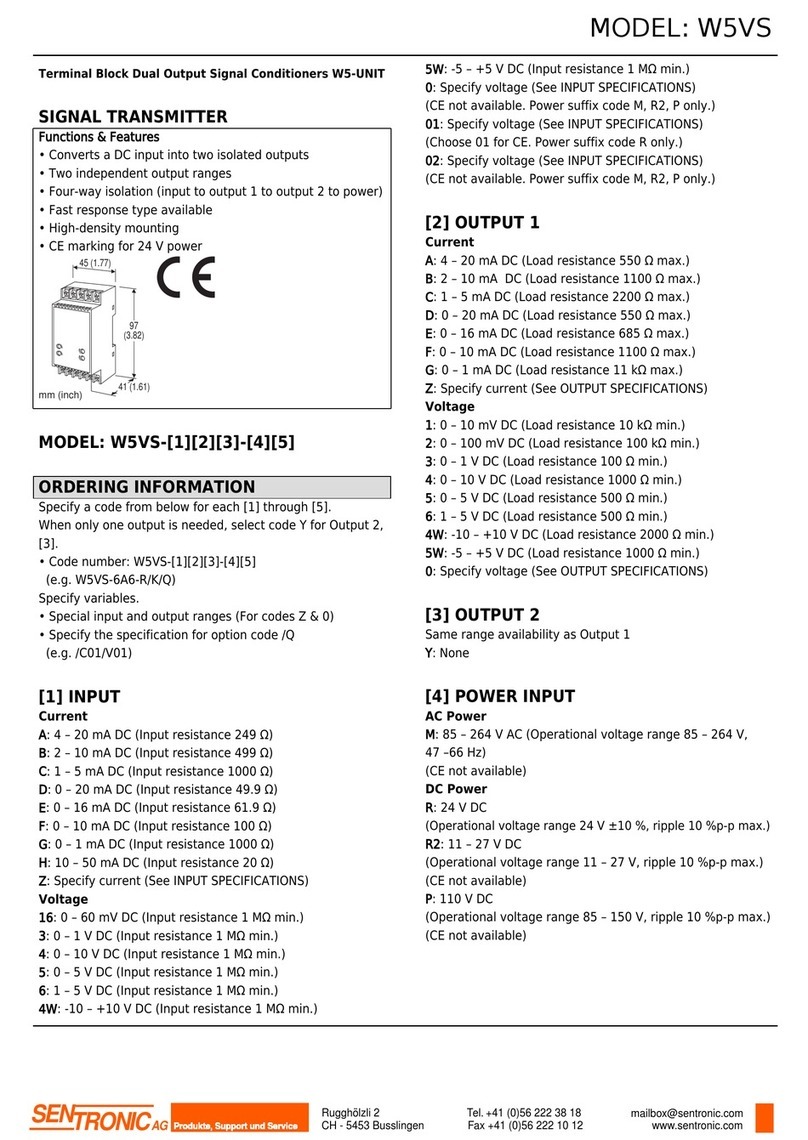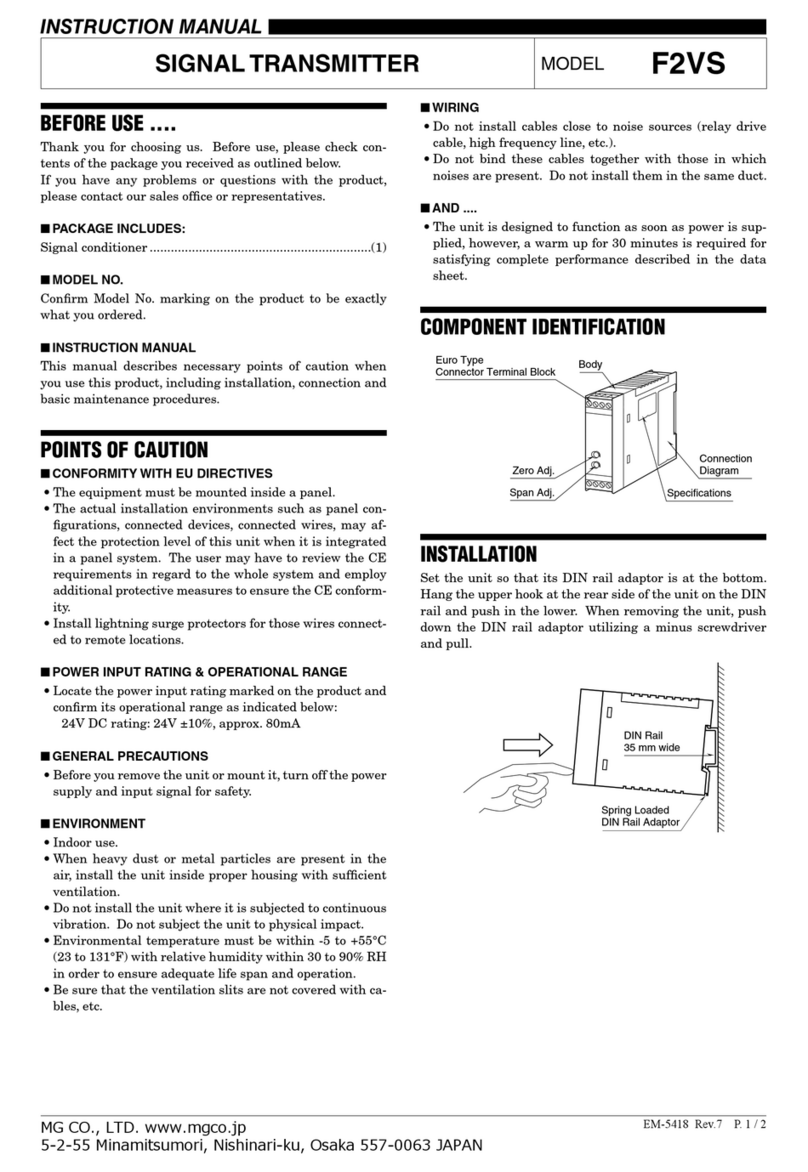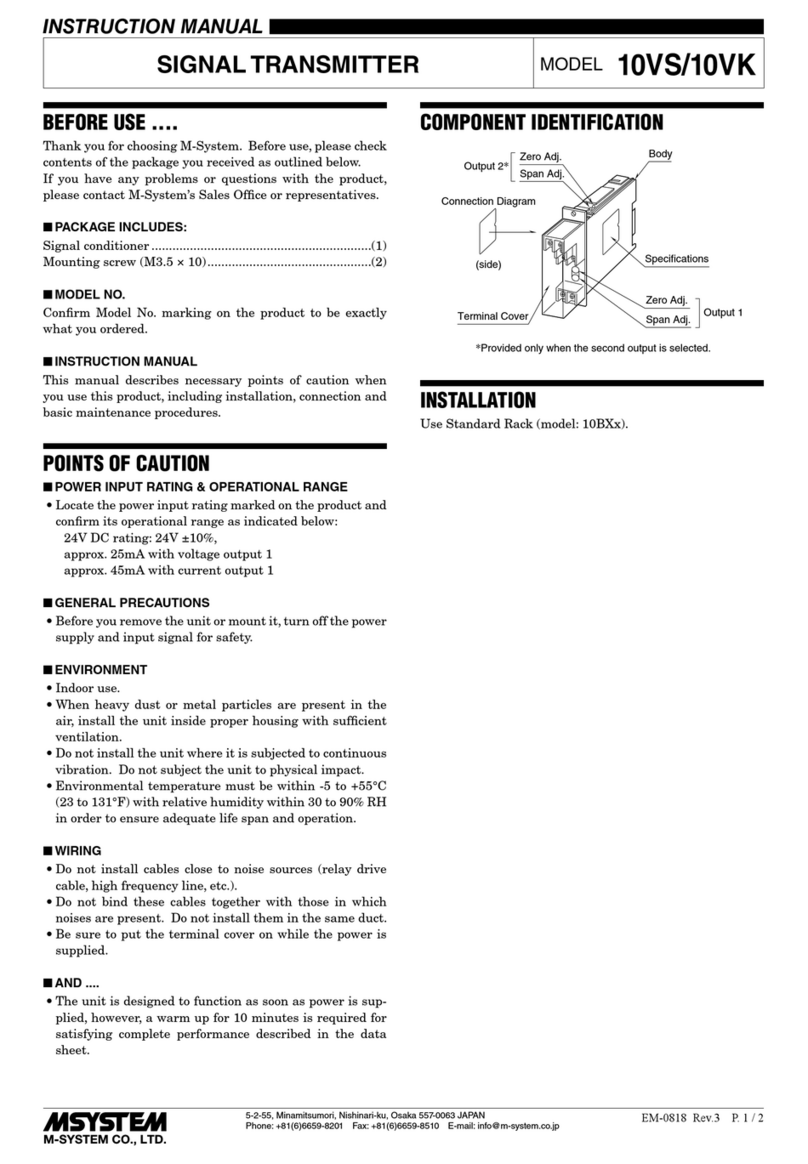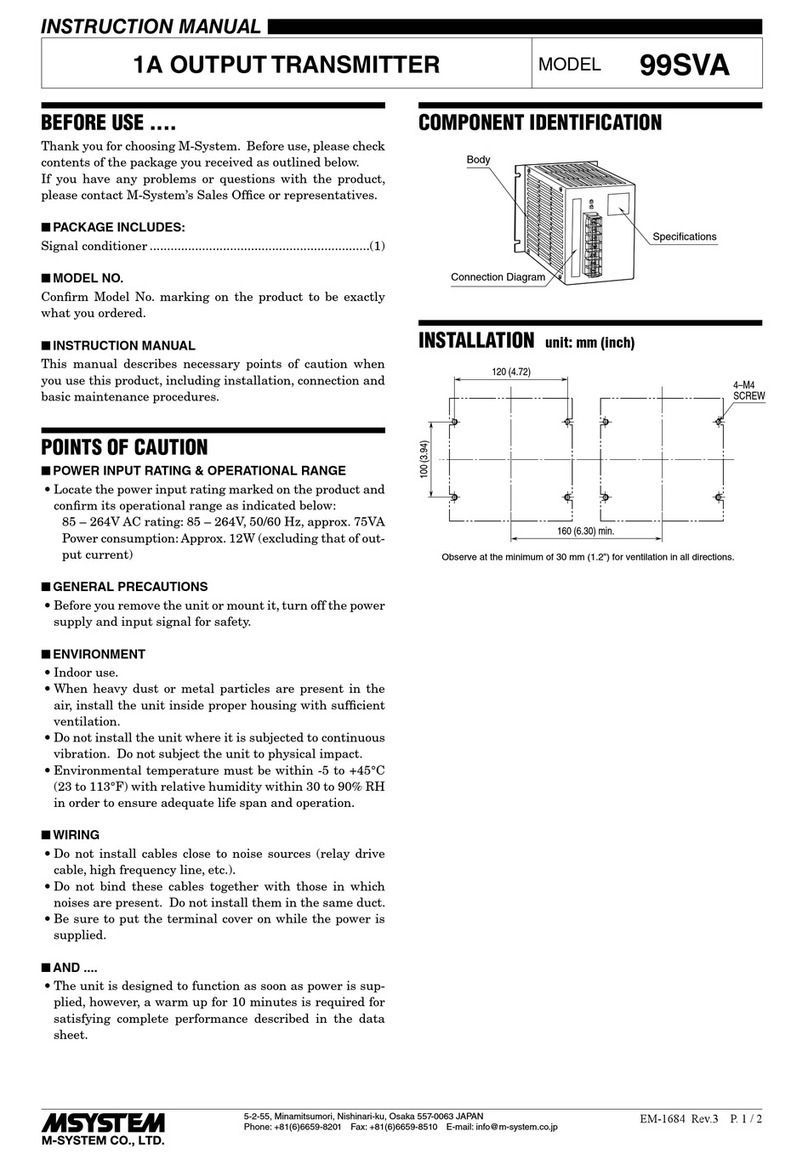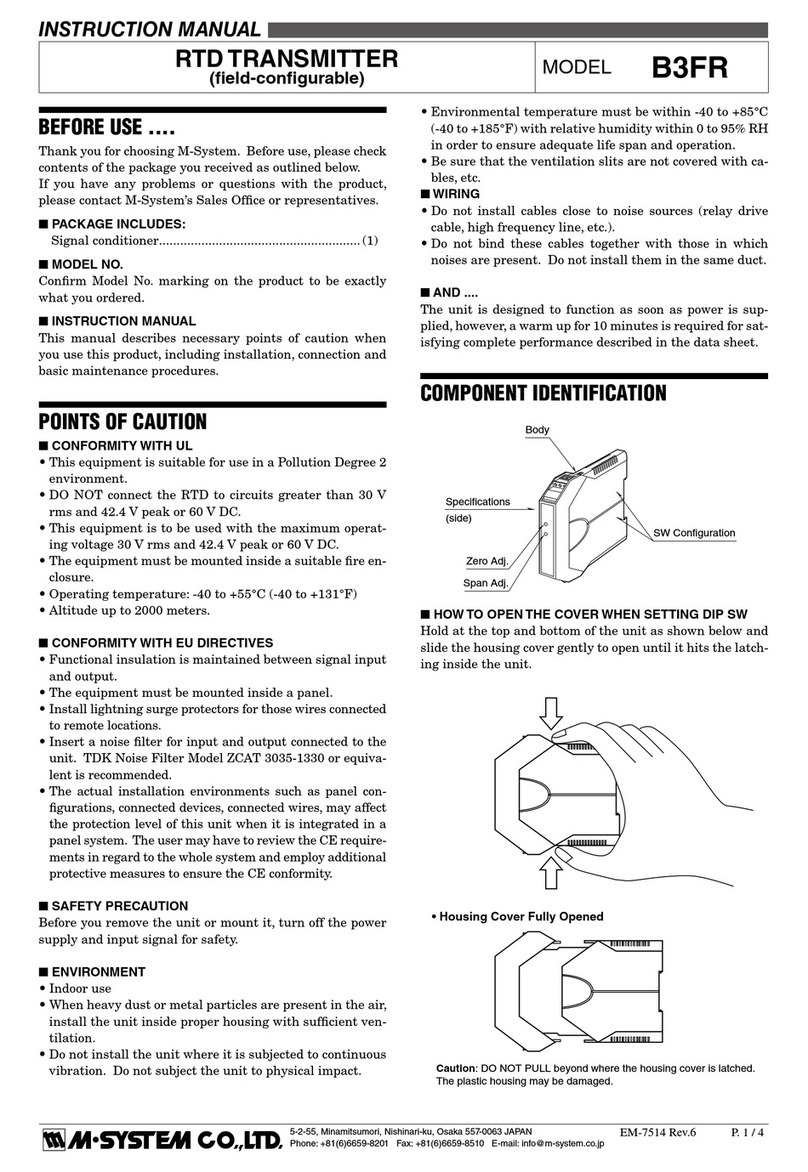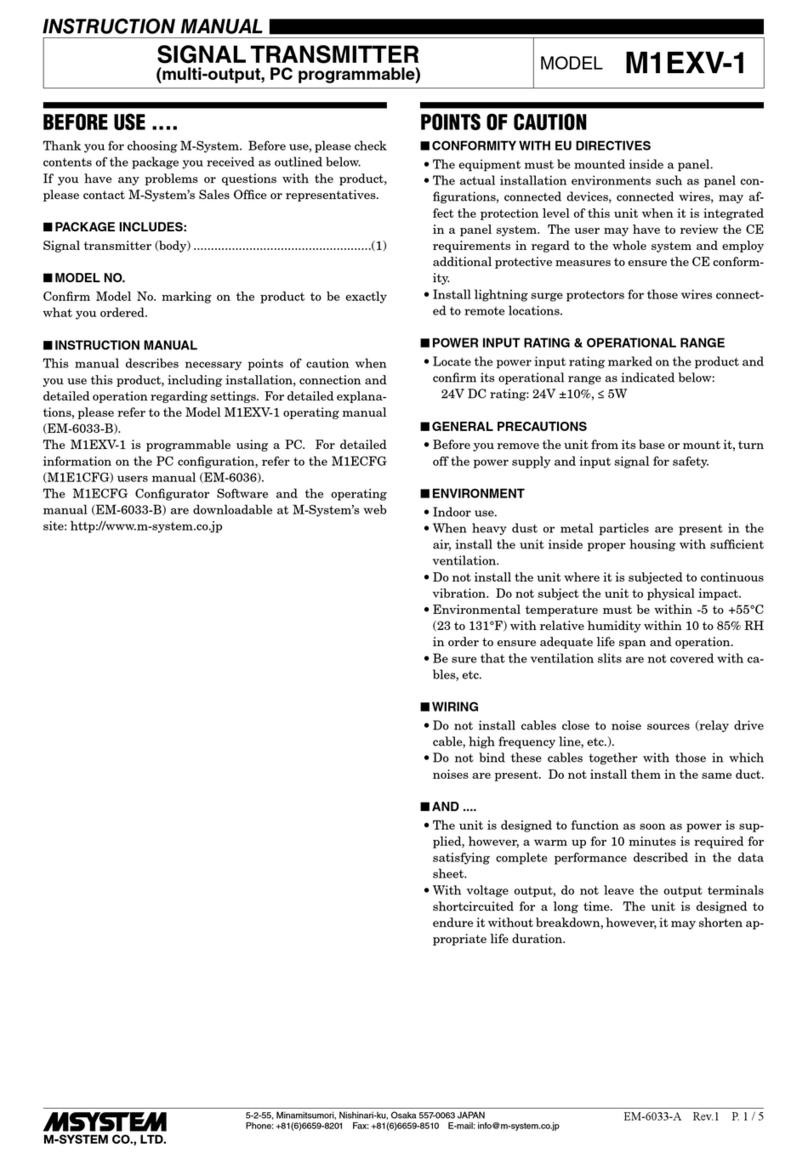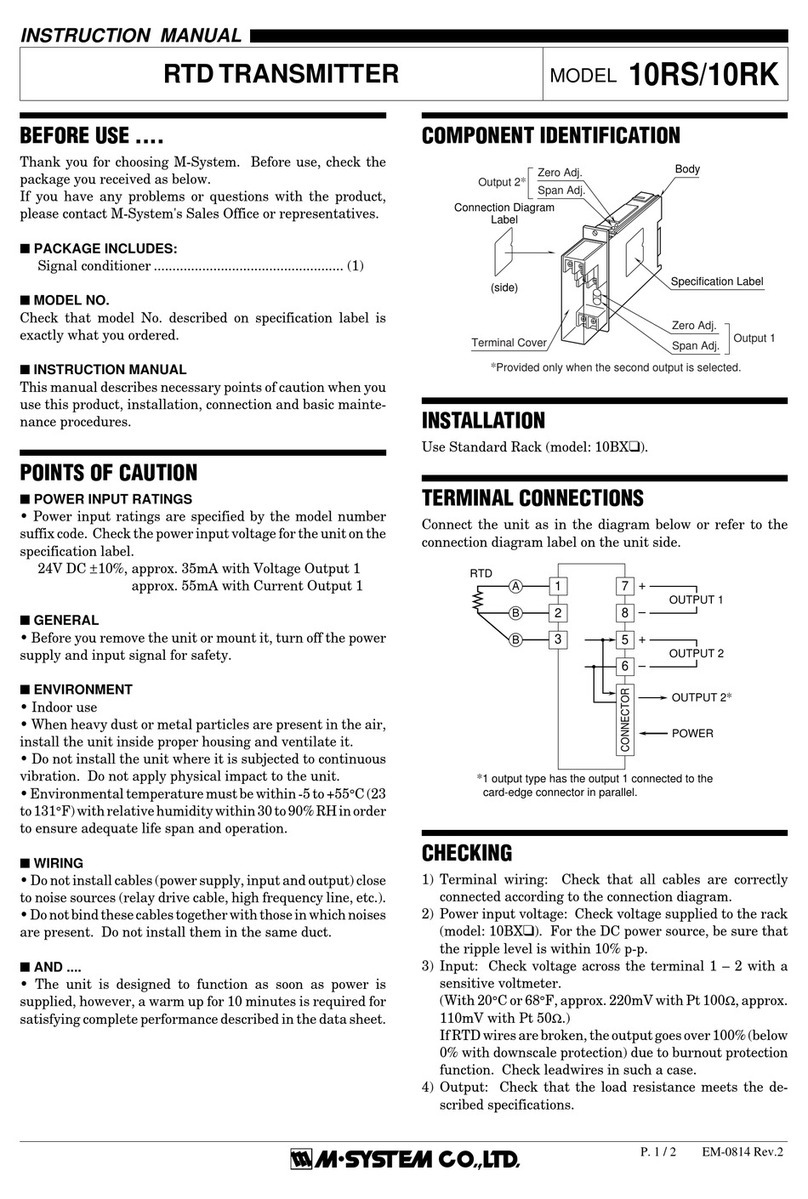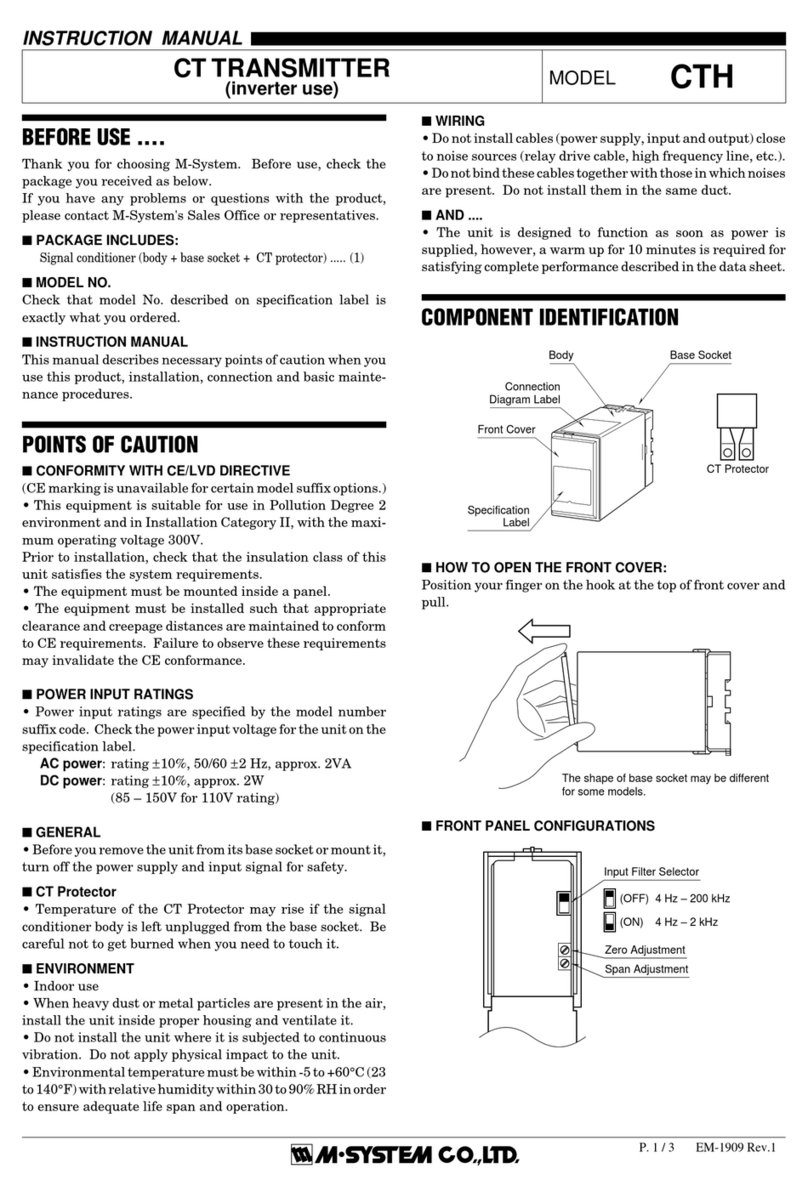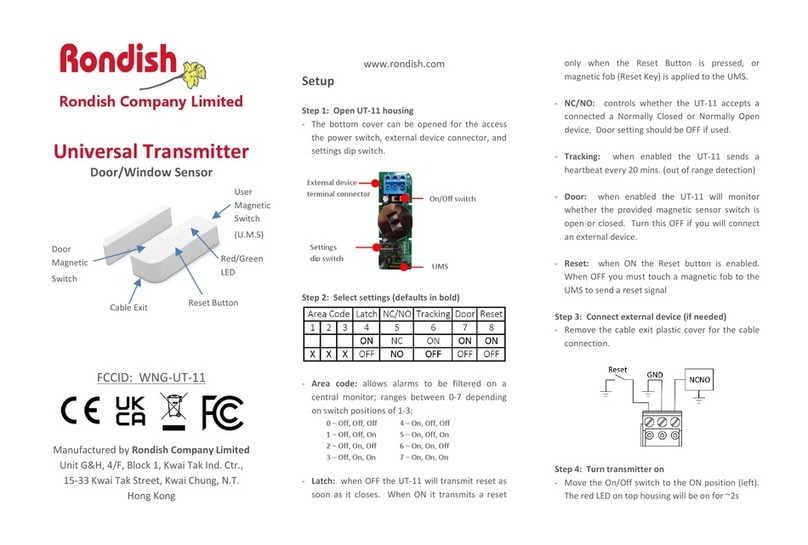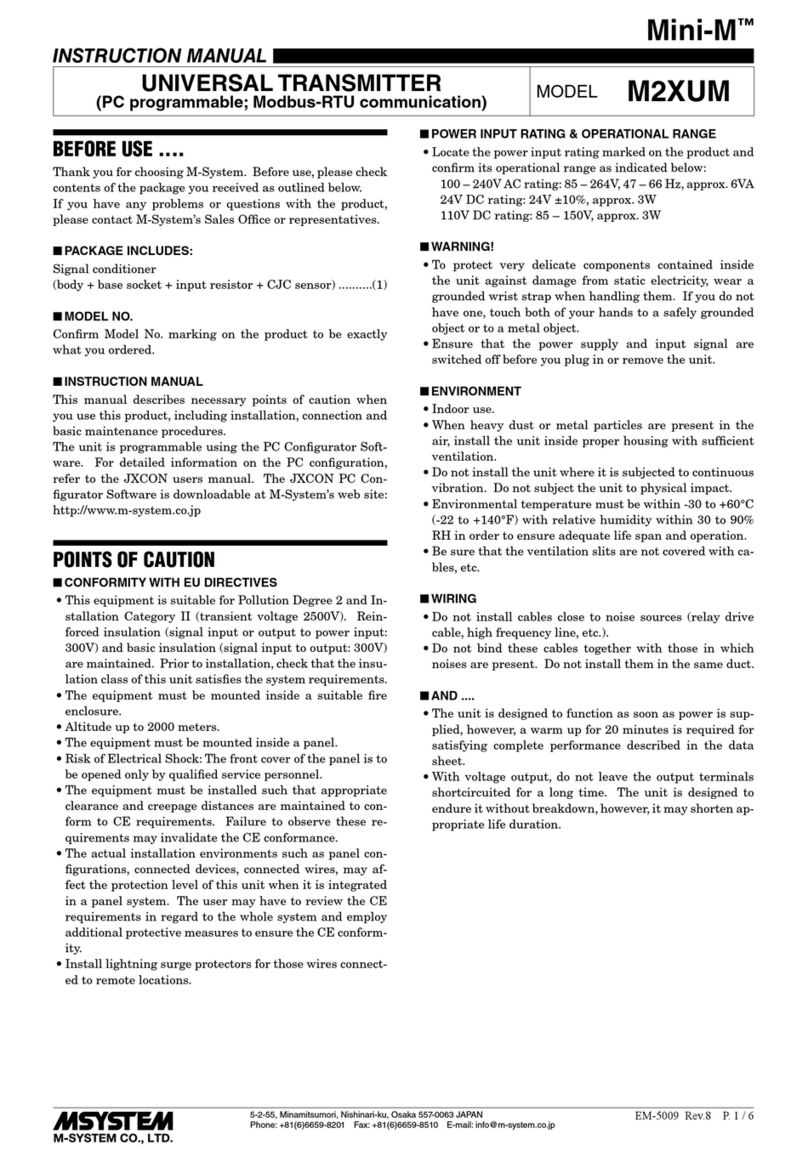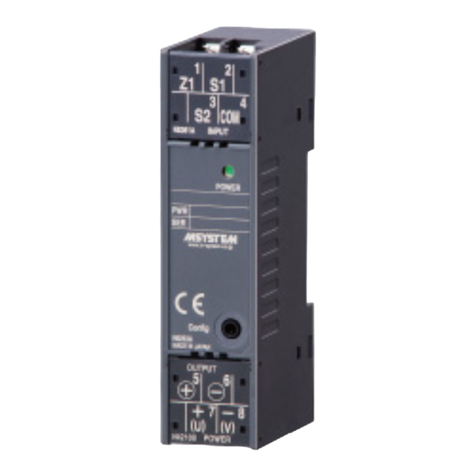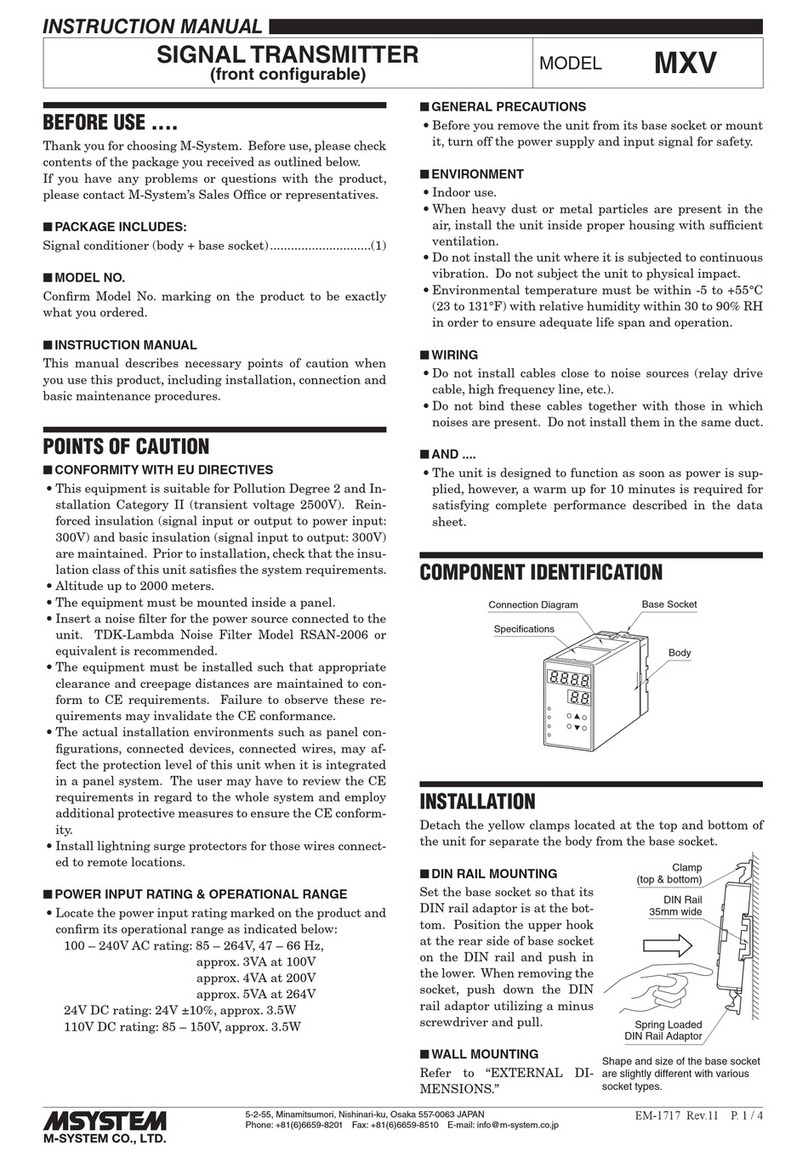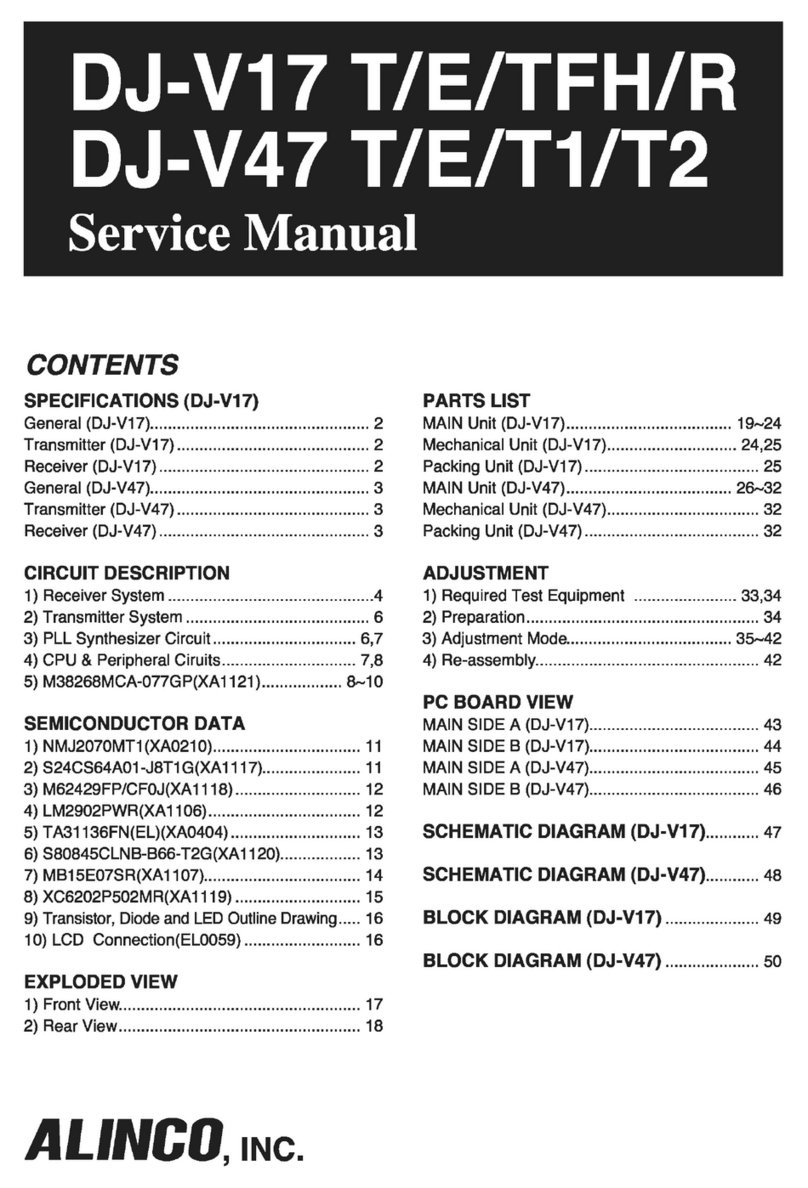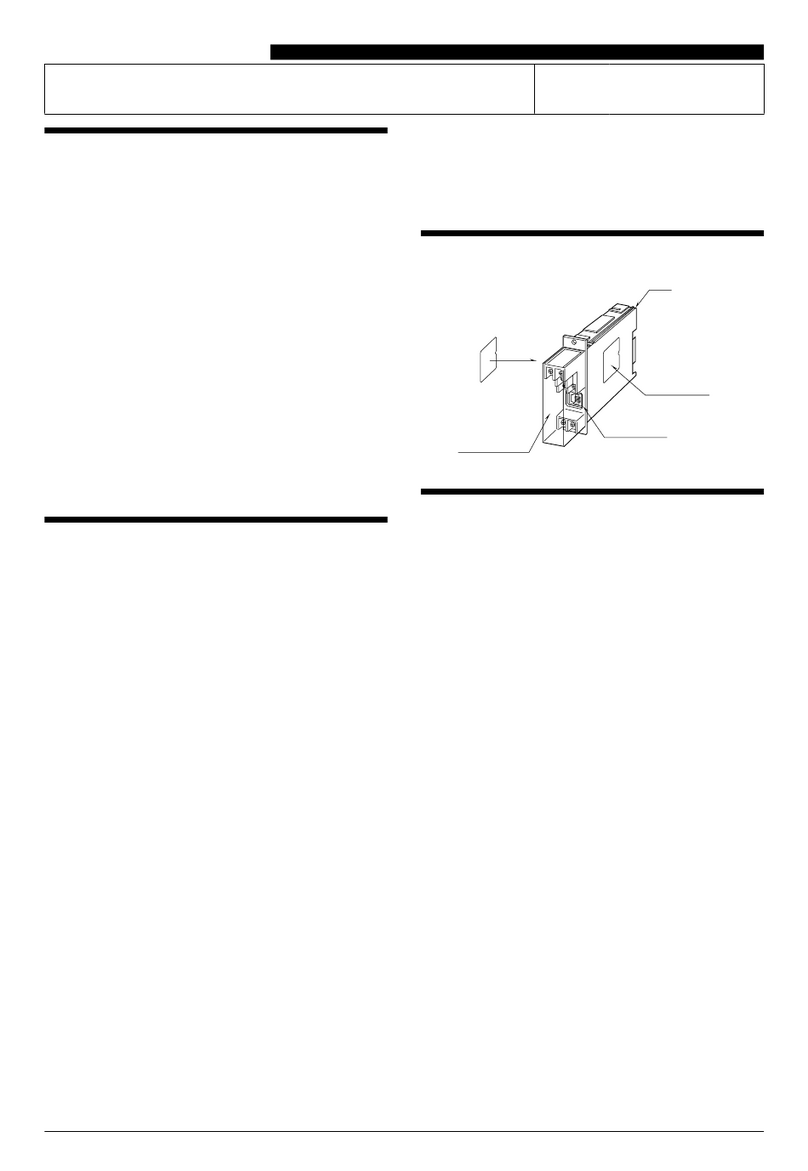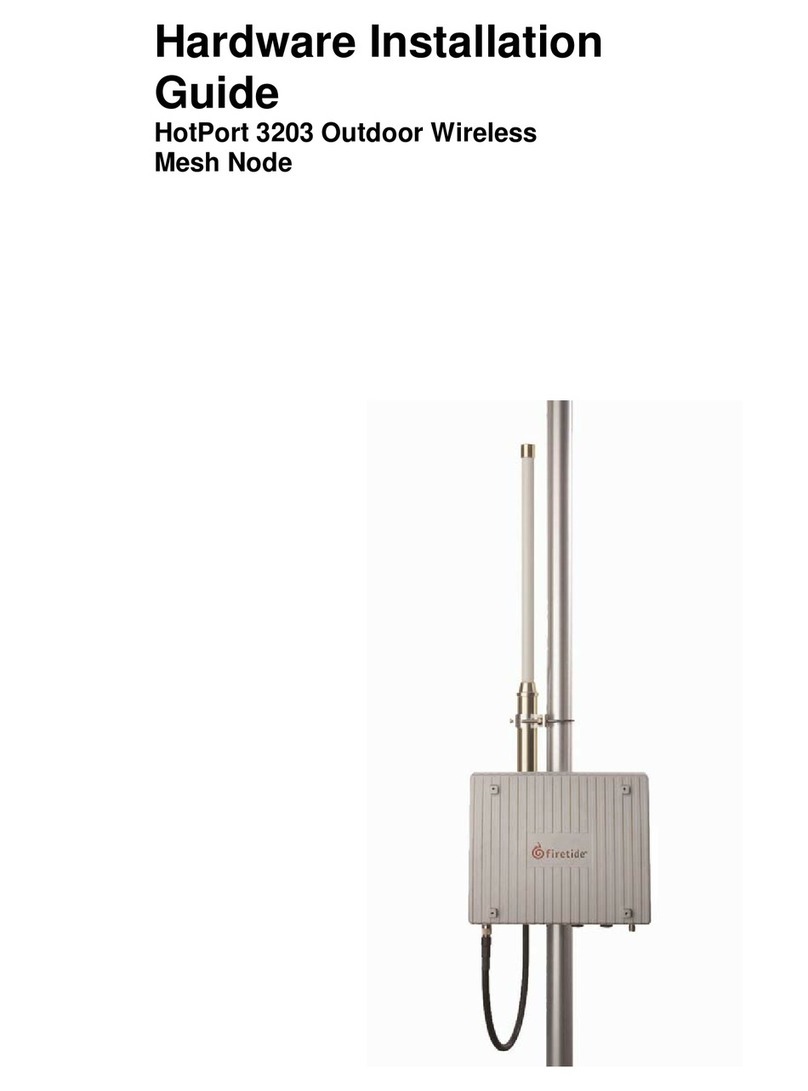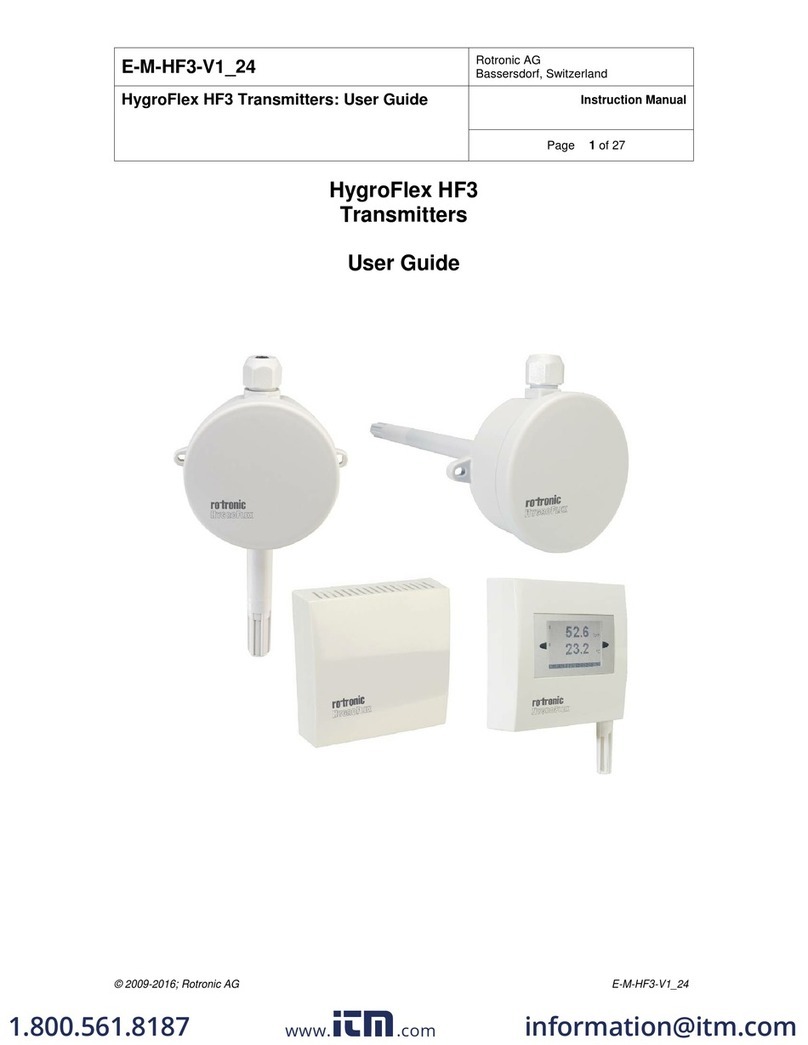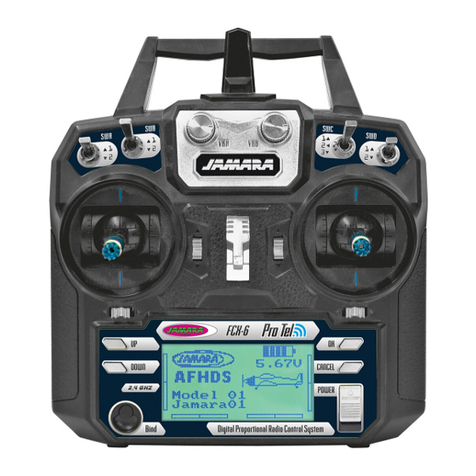
M3LPA2
P. 1 / 10EM-2657 Rev.3
5-2-55, Minamitsumori, Nishinari-ku, Osaka 557-0063 JAPAN
Phone: +81(6)6659-8201 Fax: +81(6)6659-8510 E-mail: info@m-system.co.jp
FREQUENCY TRANSMITTER
(eld- and PC-congurable) MODEL M3LPA2
INSTRUCTION MANUAL
BEFORE USE ....
Thank you for choosing M-System. Before use, please check
contents of the package you received as outlined below.
If you have any problems or questions with the product,
please contact M-System’s Sales Office or representatives.
■PACKAGE INCLUDES:
Signal conditioner......................................................... (1)
I/O range and tag name label sheet ............................ (1)
■MODEL NO.
Confirm Model No. marking on the product to be exactly
what you ordered.
■INSTRUCTION MANUAL
This manual describes necessary points of caution when
you use this product, including installation, connection and
basic maintenance procedures.
The M3LPA2 with Option /A is programmable using the PC
configurator software. For detailed information on the PC
configuration, refer to the M3LPACFG instruction manual.
The M3LPACFG PC Configurator Software is downloadable
at M-System’s web site: http://www.m-system.co.jp.
POINTS OF CAUTION
■CONFORMITY WITH UL
•ThisequipmentissuitableforuseinaPollutionDegree2
environment.
•Thisequipmentistobeusedwiththemaximumoperat-
ingvoltage30Vrmsand42.4Vpeakor60VDC.
•Theequipmentmustbemountedinsideasuitablereen-
closure.
•Operatingtemperature:-25to+55°C(-13to+131°F)
■CONFORMITY WITH EC DIRECTIVES
•Functional insulation is maintained between the signal
input and output.
•Altitudeupto2000meters
•Theequipmentmustbemountedinsideapanel.
•Insertnoiseltersforthepowersourceconnectedtothe
unit.Densei-LambdaModelMBS-1220-22orequivalent
is recommended.
•Theactualinstallationenvironmentssuchaspanelcon-
figurations, connected devices, connected wires, may af-
fect the protection level of this unit when it is integrated
in a panel system. The user may have to review the CE
requirements in regard to the whole system and employ
additional protective measures to ensure the CE conform-
ity.
■POWER INPUT RATING & OPERATIONAL RANGE
Locate the power input rating marked on the product and
confirm its operational range as indicated below:
100–240VACrating:85–264V,47–66Hz,approx.3–5VA
10–32VDCrating:9–36V,approx.3W
■SAFETY PRECAUTION
Before you remove the unit or mount it, turn off the power
supply and input signal for safety.
■ENVIRONMENT
•Indooruse
•Whenheavydustormetalparticlesarepresentintheair,
install the unit inside proper housing with sufficient ven-
tilation.
•Donotinstalltheunitwhereitissubjectedtocontinuous
vibration.Donotsubjecttheunittophysicalimpact.
•Environmentaltemperaturemustbewithin-25to+65°C
(-13to+149°F)withrelativehumiditywithin0to95%RH
in order to ensure adequate life span and operation.
•Besurethattheventilationslitsarenotcoveredwithca-
bles, etc.
■WIRING
•Do not install cables (power supply, input and output)
close to noise sources (relay drive cable, high frequency
line, etc.).
•Do not bind these cables together with those in which
noisesarepresent.Donotinstalltheminthesameduct.
■AND ....
The unit is designed to function as soon as power is sup-
plied, however, a warm up for 10 minutes is required for sat-
isfying complete performance described in the data sheet.

